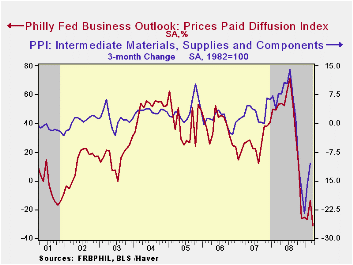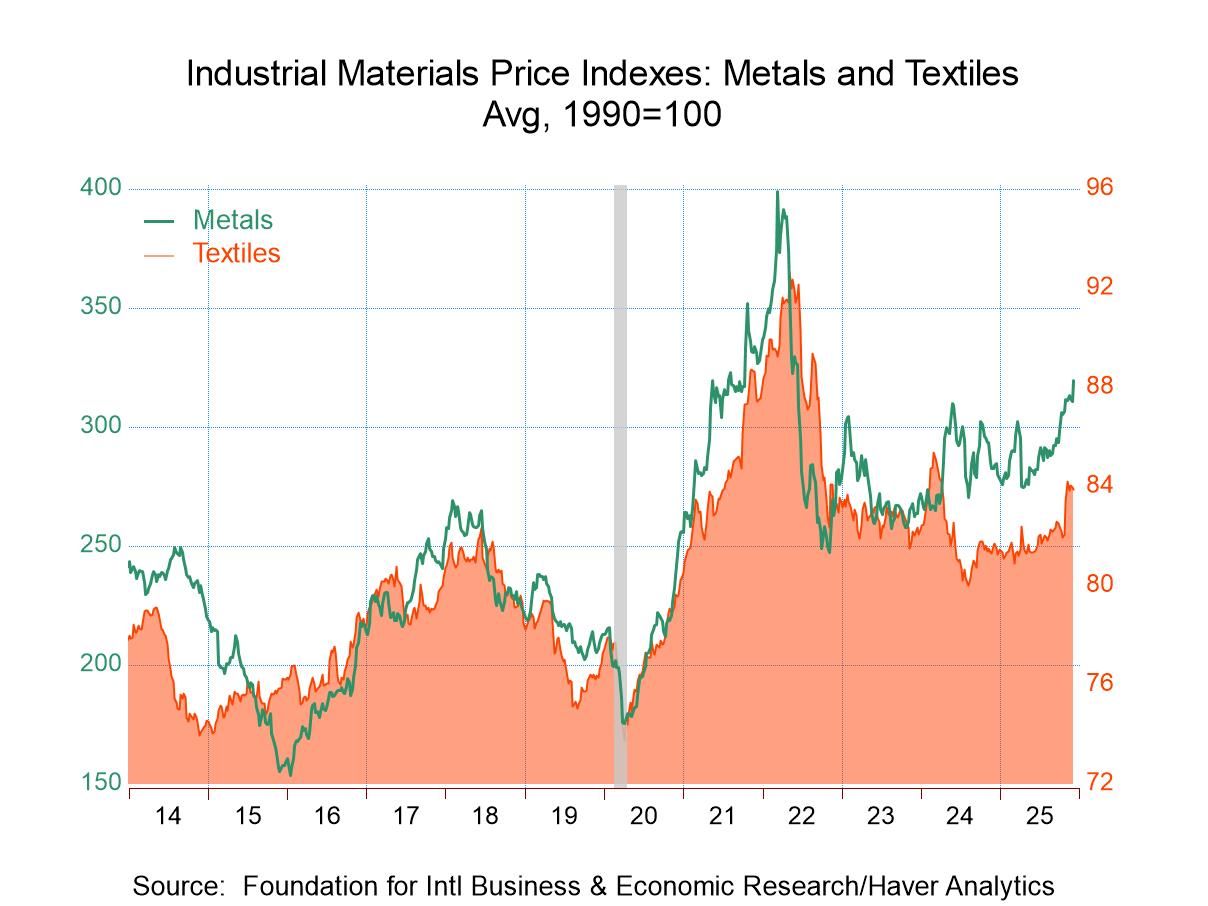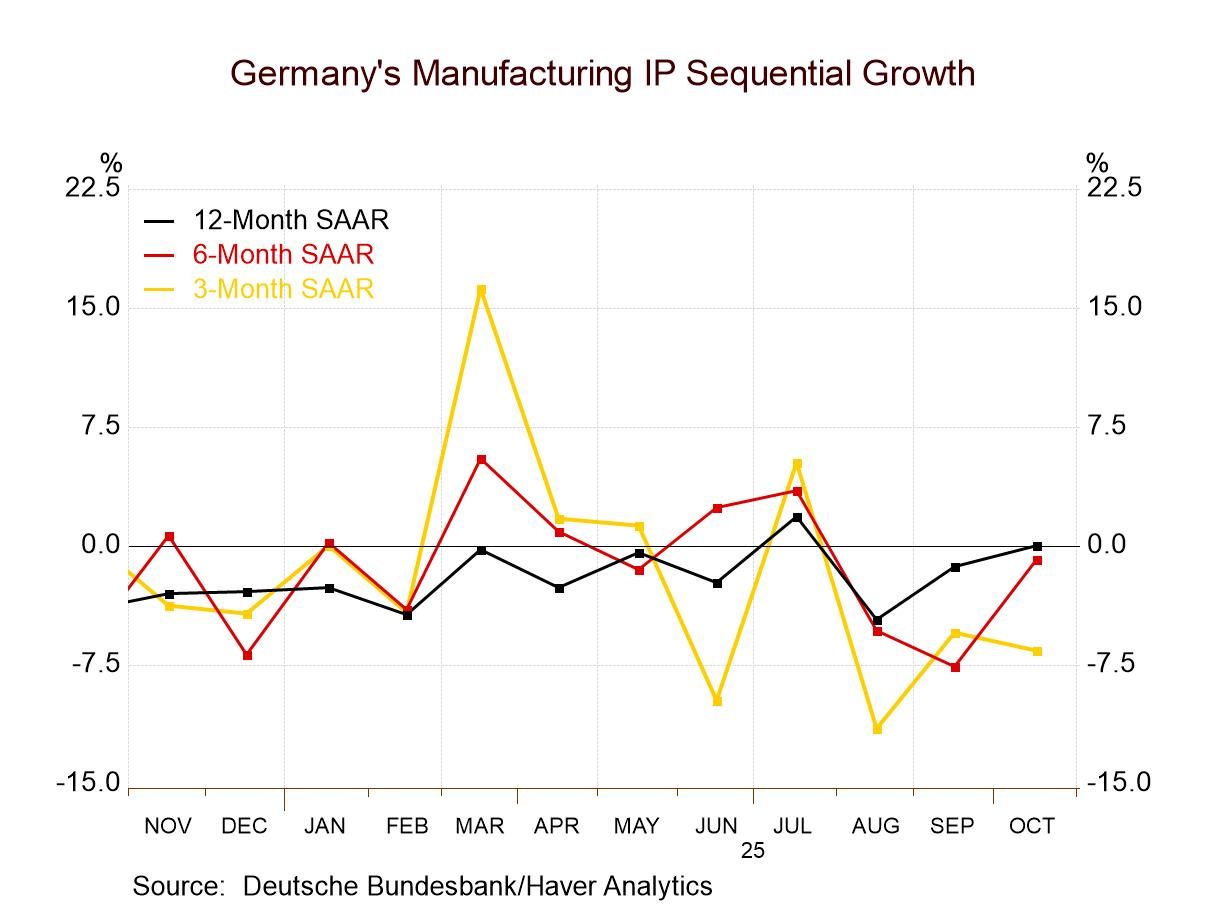 Global| Mar 19 2009
Global| Mar 19 2009Philadelphia Fed Index Indicates Further Economic Contraction
by:Tom Moeller
|in:Economy in Brief
Summary
The latest figures from the Philadelphia Federal Reserve Bank indicate that economic contraction continued. During March, the Index of General Business conditions in the manufacturing sector came in at -35.0 versus a reading of -41.3 [...]

The latest figures from the Philadelphia Federal Reserve Bank indicate that economic contraction continued. During March, the Index of General Business conditions in the manufacturing sector came in at -35.0 versus a reading of -41.3 last month. Expectations were for -39. The latest was near the lowest since 1991.
During the last ten years there has been a 70% correlation between the level of the Philadelphia Fed Business Conditions Index and the three-month growth in factory sector industrial production. There has been a 64% correlation with q/q growth in real GDP.
The Philadelphia Fed constructs a diffusion index for total business activity and each of the sub-indexes. The business conditions index reflects a separate survey question.
Amongst the sub-indexes, the employment index fell out of bed. The 6.2 point decline pulled the index to another record low. Fifty-two percent of respondents expected to reduce employment levels, another record, while none expected to raise them. During the last ten years there has been a 79% correlation between the index level and the m/m change in manufacturing sector payrolls.
The new orders figure again was quite weak and deteriorated to the lowest level since 1980. The shipments index improved from its record low, but the move was slight.
The prices paid index at -31.3 was near the record low. Five percent of respondents planned to raise prices while thirty seven percent expected to lower them. During the last ten years there has been a 73% correlation between the prices paid index and the three-month growth in the intermediate goods PPI. There has been an 82% correlation with the change in core intermediate goods prices.
The separate index of expected business conditions in six months fell slightly but remained near its highest level since September. The expectations index for new orders fell back to the lowest level since December but the expectations index for employment held steady at a slightly improved reading versus the lows this past fall.
The figures from the Philadelphia Federal Reserve can be found in Haver's SURVEYS database.
The latest Business Outlook Survey from the Federal Reserve Bank of Philadelphia can be found here.
The Peopling of Macroeconomics: Microeconomics of Aggregate Consumer Expenditures from the Federal Reserve Bank of Philadelphia is available here.
| Philadelphia Fed (%) | March | February | March '08 | 2008 | 2007 | 2006 |
|---|---|---|---|---|---|---|
| General Activity Index | -35.0 | -41.3 | -15.9 | -21.3 | 5.0 | 8.0 |
| Prices Paid Index | -31.3 | -13.7 | 53.4 | 36.4 | 26.3 | 36.7 |
Tom Moeller
AuthorMore in Author Profile »Prior to joining Haver Analytics in 2000, Mr. Moeller worked as the Economist at Chancellor Capital Management from 1985 to 1999. There, he developed comprehensive economic forecasts and interpreted economic data for equity and fixed income portfolio managers. Also at Chancellor, Mr. Moeller worked as an equity analyst and was responsible for researching and rating companies in the economically sensitive automobile and housing industries for investment in Chancellor’s equity portfolio. Prior to joining Chancellor, Mr. Moeller was an Economist at Citibank from 1979 to 1984. He also analyzed pricing behavior in the metals industry for the Council on Wage and Price Stability in Washington, D.C. In 1999, Mr. Moeller received the award for most accurate forecast from the Forecasters' Club of New York. From 1990 to 1992 he was President of the New York Association for Business Economists. Mr. Moeller earned an M.B.A. in Finance from Fordham University, where he graduated in 1987. He holds a Bachelor of Arts in Economics from George Washington University.






